1. Include a full course of NFP in marriage preparation programs
Parish leadershippastors, DREs, parish coordinators, and catechistsmust accept the need for NFP formation in the parish. In fact, the United States Conference of Catholic Bishops has instructed dioceses to include Natural Family Planing in their marriage preparation programs: “We urge that premarriage programs require a full course of instruction in Natural Family Planning as a necessary component in the couples effective realization of what they need and have a right to know in order to live in accord with the clear teaching of the Church.”1 Once it is established that the Church forbids the use of contraception and sterilization for family planning, a teaching with which couples in marriage preparation should be keenly familiar, positive alternatives must be provided. If not, couples who are unaware of natural methods, or confuse them with outmoded methods may consider the Churchs teaching burdensome, irrelevant and unreasonable.
A full course of NFP instruction, which includes a complete presentation of the moral, methodological, and scientific/physiological aspects of NFP, will equip couples to embrace the Churchs teaching on marital sexuality and contraception with greater ease. Moreover, a full course in NFP will inculcate not just a methodology but a way of life that is open to the gift of fertility, total reciprocal self-giving, and the blessings of children. Natural Family Planning is hence an integral part of marriage preparation in that it requires openness, communication, selflessness, discipline, and commitmentall of which are prerequisites to a valid and successful marriage. NFP instruction, when seen in this light, fits marital preparation seamlessly, supporting the couples formation in all varieties of marital “intercourse”: physical, mental, spiritual, and emotional.
2. Introduce Natural Family Planning to adult converts in RCIA programs
Parish leaders must be sensitive to the fact that many inquirers in RCIA are engaged couples in which one or both partners are seeking marriage in the Church but are not yet Catholic. A full course in NFP is not necessarily appropriate in this setting, but a survey of the main tenets and an introduction to the methodology could be provided simply. Guest speakers (NFP teaching couples, nurses or doctors trained in NFP, diocesan NFP and/or Family Life Coordinators) are a good resource for a brief one or two class introduction. Needless to say, it is imperative that RCIA team members fully embrace the Churchs teaching on contraception and the blessings of childrena unified catechesis is essential.
For many couples, initial exposure to NFP instruction produces tentative curiosity more than an instant conversion. For this reason, it is advisable to provide couples with materials they can take home and review: books, pamphlets, tapes, videos, websites, and phone numbers for further information. Couples should also be given contact information for NFP couples who are willing to discuss NFP, which brings us to our next tool.
3. Assemble a team of NFP-using couples who are willing to give testimonials and counsel with engaged and married couples
The testimony of couples who have successfully incorporated NFP into their marriages and who can speak to its advantages is perhaps the most effective means of persuading engaged and married couples to explore Natural Family Planning. Testimonial/Consultant couples personalize the Churchs case for natural methods and provide needed support and advice for inquiring couples. Panel testimonies in which several couples of varying ages and states in life provide testimony to parishioners about the benefits of NFP are an indispensable part of couples formation. If testimonial couples are willing to make a deeper commitment, they can ease into the role of consultants, making themselves available for phone consultation, or opening their homes for a visit from couples who want to know more. This kind of openness and personal attention surpasses didactic instruction and actually disciples couples into the NFP lifestyle.
While engaged couples seeking marriage in the Church are especially suited to NFP instruction, there are many couples in the parish already married that have not chosen NFP. The parish family must not turn a blind eye to these latter couples, who are equally in need of instruction and discipleship. Testimonial evenings can be organized apart from marriage preparation classes in special events like dinners and even outings, which offer a nonthreatening fellowship. Dinners and outings create a friendly, casual environment in which NFP couples and non-NFP couples blend, as opposed to an instructional setting in which inquirers assume a student status, implying that they are non-NFP couples. Anonymity, at least initially, can be a comfort to the curious.
4. Equip families to instruct their children in the Churchs teaching on contraception and the blessings of children
The Church refers to the family as the “Domestic Church” because it is the first and most influential faith formation a person receives. Especially pertinent to catechesis in marital relations, it is the first school of human interaction and relationships. Instruction in NFP begins, not with sex, but with the example of parents, who by their interaction with each other and their children, model openness to life, self-sacrificial love, and obedience to the natural law. Put simply, children learn from their parents that Natural Family Planning fosters a happier marriage.
Parish adult education programs should accordingly address the Churchs vision for sexuality in marriage and NFP. Such instruction should be broadly integrated into Bible studies, courses for parents seeking baptism for their children, married and engaged encounters, retreats, parish missions, seasonal programs like Lenten series and observances of feasts, pro-life initiatives, and social justice campaigns. It is not necessary to invent a lot of new NFP-centered programs. Existing programs can be supplemented to include NFP and its corollaries. This is perhaps more desirable as it communicates to the parish that NFP is part and parcel of not just the vocation of marriage, but the vocation to holiness to which we are all called.
5. Preach NFP from the pulpit
Catechesis for most adult Catholics occurs during the homily of Sunday Mass. The homily is the primary instance of formal public instruction in human sexuality and beginning of life issues, including contraception and NFP. Pastors are charged with the duty of fathering their congregation away from bondage to sin and toward freedom in the truth: “If you remain in my word, you will truly be my disciples, and you will know the truth, and the truth will set you free” (Jn 8:32). Whereas the use of contraception is a significant obstacle to Christian freedom, fulfillment, and happiness, Natural Family Planning is a gateway to these goals in marriage. In general, NFP marriages enjoy greater freedom, fulfillment, and happiness, which is evidenced in their almost nonexistent divorce rate. In an age of throwaway marriages, couples should be given from every source possible a pathway to a joyful, successful marriage. What pastor would not desire this for his children: “What father among you would hand his son a snake when he asks for a fish? Or hand him a scorpion when he asks for an egg?”(Lk 11:11,12)?
There are two common objections to preaching NFP: (1) parishioners will object to the message and vote against it, as it were, with their feet; and (2) direct instruction on NFP neglects the readings, from which the homily is supposed to proceed.
That parishioners will object to the message is insufficient reason to conceal the truth. This part of the truth is one our married couples desperately need, and the love of Christ compels us. Recall the many times Jesus preached a message that was unpopular to his public, or how many times prophets and martyrs like John the Baptist stuck their necks out for the truth. Yet neither Jesus nor John the Baptist had any shortage of disciples. Compassion demands the truth, especially when so much is riding on it. Without a clear understanding of contraception and NFP many otherwise sound marriages will fail with incalculable damage to the spouses, the children, and the community. We must not let fear of rejection cause us to allow members of our community to continue on a destructive path.
The growth and appeal of Christianity throughout the ages has been the result of an uncompromising proclamation of the truth. What have we to fear, furthermore, when we have been granted the Spirit of truth through whom the Apostle Peter converted three thousand with a message that was forbidden by authorities? In his last instructions to the Apostles, through whom Holy Orders has descended to the priesthood, Christ commissioned the Apostles to teach all that He had commanded. Saint Paul, accepting this mandate fully, declared, “If I preach the gospel, this is no reason for me to boast, for an obligation has been imposed on me, and woe to me if I do not preach it!” (1 Cor 9:16). The obligation here is lovewilling the good of another. Simple love for the married members and the families of our communities will drive us to give them the tools they need to succeed.
Courage in preaching the Gospel is easy to discuss in the abstract but in the “real world” of parish life and politics, can it be done? Aside from the fact that the Gospel has always been preached in the real world, sometimes at great sacrifice, courageous emphasis on NFP has proven rewarding for many priests. Father Randall Moreau, of the Diocese of Lafayette, Louisiana, claims that a growing NFP culture in his parish has enlivened volunteerism and lightened his workload:
Natural family planners make great volunteerswilling to make sacrifices for the Church, for God, for us priests, constantly. “NFPers” far outdo the average volunteersand for so much longer than the average volunteer. [They] are passionate about our work, the salvation of soulsbecause they want souls; because they knowthat what is at stake is souls. They know its not just the priests job to save souls, its everybodys job… (Audiotape “Why NFP is a Priority in My Parish” available from One More Soul, individually and as part of a 3 tape set “NFP Talks for Clergy” )
Greater openness to Gods providence in the area of marital sexuality can be seen in two ways, either as a gateway to greater openness in other areas of spirituality and morality, or as the removal of a last hindrance to complete abandonment to Christ. Some would say that in the former case, the giving over to God of our sexuality initiates a pattern of self-denial that stimulates other virtues. In the latter case, it may well be that we let loose a flood of virtue that has been constricted by our ignorance and/or recalcitrance on this issue. In either case, when the community entrusts its marriages and its outlook on human sexuality fully to God, it sets itself on a course of advanced spirituality. This pays dividends to diocesan parishes and schools. As a result, it is improbable, if not impossible, to find a priest who regrets creating a pro-fertility, pro-Natural Family Planning parish.
Father Frank Pavone, president of Priests for Life, testifies to the positive effects of making NFP central to parish ministry for engaged couples:
Is it possible for a parish in the United States today to require the couples who get married there to learn NFP? Not only is it possible, but it is happening, right in New York City.
After my ordination in 1988, I was appointed parochial vicar at St. Charles parish, in the Oakwood Heights section of Staten Island. St. Charles registers about 3600 families, mostly of Irish and Italian descent. It has an average number of 68 weddings a year.
Whats the reaction? Overwhelmingly, the couples appreciate having taken the sessions. Initially, there is sometimes a question as to why they need to do this when “my friend did not have to when she got married in her parish.” We explain to them that we are committed to giving them the best possible preparation, so that they will be as fully equipped as possible to live a Catholic marriage. We show them that we have their best interests at heart. We explain that we dont want them to ever feel they are in a dilemma of having to choose between planning their family and being a good Catholic.
Follow-up is important. We ask them to bring us the certificate indicating they have attended Sessions I and II of the NFP course. Then we ask for feedback. Some of the reactions Ive received are, “It was interestingI never knew about those things before!” “There were a lot of charts, but as I listened I realized how useful it is.” “At first we didnt see why we should go, but now I see the value of it. Every couple should know about this!”
During all the years of this policy, we can only recall one couple who decided to go to another parish rather than have to take the NFP class.
Yes, it is possible to spread the good news of NFP. We need to be willing to be real Shepherds, leading the way courageously, ready to eagerly point to NFP and say, “Look at this! This isimportantindeed, necessaryfor you to know! This will bless your marriage.” Ultimately, from the couples we lead in this way, there can only be one wise response: “Thank you!”2
The second objection, that the readings of the Mass are not geared to homilies on contraception and the blessings of children, underestimates the unfathomable depth of the Scriptures and the lessons they contain for an endless variety of moral questions. A word for word condemnation of contraception or the blessings of children need not appear in the readings for us to glean important lessons about openness to fertility, abandonment to providence, and the evils of sexual immorality. The Liturgy of the Word, moreover, is celebrated within the context of the liturgical yearseasons and feasts that provide a thematic backdrop to the readings. Many of these seasons and feasts contain important lessons for the proper ordering of marital love. The table on the following pages relates the readings of the Mass and the liturgical calendar to the Churchs teaching on contraception and openness to children, in order to facilitate the planning of homilies on these subjects.
Opportunities for an NFP Homily
1.Seasonal Readings such as Advent, Christmas, Lent, and Easter:
Advent and Christmas
Advent and Christmas both contain readings in which the plan of God rests on the abandonment of his chosen ones to divine providence and their openness to life/children. The fiat of Mary in the annunciationand to a lesser extent, that of Elizabethexemplify the unfolding of Gods plan through the parents openness to children. How many of us could rule out the possibility that a prophet might be born to us, someone who will help heal the world in extraordinary ways? How would the world have been different if Mary and Elizabeth, or Abraham and Sarah, or Adam and Eve had not accepted Gods invitation to children? What would have become of the poor and indigent people of Calcutta if Mother Teresas parents had refused their gift of fertility?
Easter
The Easter Season is all about new life and rebirth. Easter reveals to us a new humanity definitively redeemedchildren of God and heirs to Gods eternal life. Christs resurrection is the consummate sharing of life, the transference of humanity from the state of servitude to the state of “children of God” (Rom 8:14-17). The Resurrection elevates humanity to divine filiation, that is, it makes us children of God and brothers and sisters in Christ. There is, perhaps, no better catechesis on the value and nature of childhood, therefore, than the Easter mystery, for children are the fruit of love. In the same way that our spiritual childhood is the fruit of Christs love for His bride, the Church, children are the visible fruit of marriage. Love is always life giving and fruitful. This is why Christs offering of love on the Cross did not end in death but in glorified life. If marriage is the visible sign of Christs laying down His life for the Church (Eph 5:25-32), then it, too, must be oriented to giving life.
Trinitarian communion was revealed in the glorification of the Son in the Resurrection. The Resurrection is the sign, par excellence, of the life-giving power of God. The family, reflecting the Trinity, is a communion of persons that more effectively witnesses to God when it, too, gives life. Christs resurrection applies Gods life-giving power to humanity, creating the family of God. We, in turn imitate, or rather, participate in this act when by our transmission of life, we create a family.
The family motif is carried on in The Feast of the Ascension, which anticipates our coming of age as children of God, and our consequent reception of the inheritance of the Father, the beatific vision. Trinity Sunday would likewise pertain to the Trinitarian significance of procreation and family as well as The Feast of Pentecost, because, just as children proceed from the mutual love of parents, the Holy Spirit proceeds as the personification of the mutual love of the Divine Persons. Our human relationships (communion among persons) naturally reflect the essence of God written into the creation. All creation bears the mark of its creator.
Preaching on NFP during Christmas and Easter has the added advantage of reaching Catholics who might not attend Mass regularly, but come out for special feasts. Pastors and parishioners alike are well aware of how much pew count swells during these two holy days. It may well be that this group of parishioners is the one most in need of catechesis on fertility and NFP, and what a brilliant opportunity to lend significance and solemnity to the message.
Lent
Lent is a time to accept our call to examine our consciences and repent from sin. Advent, too, with its emphasis on judgment and the bold preaching of John the Baptist to repentance in preparation for the coming of Christ, is a time to clean house spiritually. We must be ready to admit that, in light of the scandalously high number of Catholics who practice contraception and sterilization, we have distorted Gods design for marital sexuality. Since Lent and Advent emphasize new beginnings, both might be occasions to introduce the subject of sterilization reversal, a real possibility for most sterilized couples
2. Prominent Feasts/Solemnities
Presentation of the Lord (Feb. 2)
Jesus is portrayed by the prophet Simeon as a sign that will be opposed, a sign of contradiction. Jesus is the quintessential symbol of standing against the prevailing sentiment of the age, of rising up against bondage to sin and error without counting the cost. The Presentation of the Lord, traditionally associated with the virtue of obedience so well modeled by Joseph and Marys keeping of the Law, is well suited to the message that Christ has designed marriage to be fruitful despite the contraceptive mentality that so characterizes modern culture. We see in this feast a twofold offensive against a sinful culture: (1) Mary and Josephs acceptance of a mission that would require radical self denial, and (2) an instance of parents redeeming the culture surrendering their parenthood to divine providence. Generous openness to children in marriage is an exercise in both of these virtues. Accepting parenthood can change the world; Mary and Joseph are a testament to that.
St. Joseph, Husband of Mary (Mar. 19)
Husbands are often a stumbling block to the use of NFP in marriages. Saint Joseph cooperated with Marys call to parenthood, accepting Gods will with complete docility. Husbands must guard the purity of their wives, just as St. Joseph guarded Marys purity. Joseph admirably fulfills the ideal established by St. Paul in his letter to the Ephesians: “Husbands, love your wives, even as Christ loved the Church and handed himself over for her to sanctify her, cleansing her by the bath of water with the word, that he might present to himself the Church in splendor, without spot or wrinkle or any such thing, that she might be holy and without blemish” (5:25-27). Husbands should not allow the purity and holiness of their wives to be compromised by supporting or coercing the use of contraception. This goes for sterilization as well, even to the male, for both spouses hereby participate in an act of coition that has been sterilized.
The Immaculate Conception (Dec. 8), The Annunciation (Mar. 25) & The Assumption (Aug. 15)
Mary, along with Abraham, is held up by the Church as an exemplar of the obedience of faith (CCC 148). Her will was wholeheartedly aligned with Gods will, that is, she willed only what God willed, consenting even to the death of her beloved son, a horror spared Abraham. Disobedience to the plan of God was foreign to Mary, who surrendered her maternal rights in order to give her son as a sheep to slaughter. Likewise, disobedience to Gods design for marriage, and the teaching of the Church He commissioned as our shepherd, should be equally foreign to us. Dissent was not an issue for Maryshe did not pursue loopholes; she was not concerned with whether Christs will for her life was infallible or notshe gave herself without reservation because she loved Him truly: “Behold, I am the handmaid of the Lord” (The Annunciation, Lk 1:38). Thanks be to God for such love that brought us eternal redemption. Rebellion against the Churchs clear and unwavering teaching on contraception, and the attendant desire of this rebellion to dominate and subvert our fertility, opposes the very archetype of redeemed humanity and deprives us of the divine life realized in her Assumption.
The Birth of John the Baptist (June 24)
John the Baptist is known for his passionate and hard-hitting preaching in preparation -for the New Covenant. He called the world to repentance, urging it to make way for the Christ by making amends for its wrongdoing. His life was devoted to the circumcision of the heart (cf. Rm. 2:29) that would universalize salvation, making it possible for anyone, Jew or gentile, to be justified. His death came about as the result of his public condemnation of Herods unlawful marriage to his brothers wife. The issue over which John gave up his life was the sanctity and right ordering of marriage. Can we not call ourselves to account for the disordering of marriage in our use of contraception and in our self-mutilative practice of sterilization? John the Baptist was no wild man, but a man of extraordinary conviction who deeply loved his people. His challenge, like that of the Church, is to clear the way for Christ by removing obstacles to full reception of His grace. Contraception is such an obstacle and until it is removed we cannot fully receive the gifts with which Christ has endowed marriage.
Saints Peter and Paul (June 29)
Out of the heroic sacrifice of saints Peter and Paul emerges a confirmation of the Christological ethic of leadership and service. Like Jesus before them, Peter and Paul laid down their lives to lead the Church, validating their commission as Apostolic fathers. Though this leadership exists today in the successors of the Apostles, rank and file Catholics too commonly dismiss Apostolic Succession by disobeying the teaching authority of the magisterium. Dissent from the Churchs teaching on contraception, because this teaching has been the clear and continuous exercise of the apostolic office that resides in the Pope and the College of Bishops, is an implicit repudiation of the apostolicity of the Church. To reject the teaching authority of the Church on this matter is to reject the apostolic office sustained by Peter and Paul at so great a cost.
Body and Blood
; Triumph of the Cross (Sept. 14)Although we may not be proficient in the theology of redemptive suffering, most of us are familiar with the expression, “offer it up.” Most of us are vaguely cognizant of the value of suffering for ourselves and others, though we do not like to suffer. The Triumph of the Cross opens up for us the mystery that our suffering can be united to that of Christ, not in such a way that Christs offering on the Cross was insufficient and needs to be supplemented by our own suffering. Rather, it teaches us that our suffering is made efficacious because it is a participation in Christs suffering: “Beloved, do not be surprised at the fiery ordeal which comes upon you to prove you, as though something strange were happening to you. But rejoice in so far as you share Christs sufferings, that you may also rejoice and be glad when his glory is revealed” (1 Pt 4:12-13). Indeed, because Christ took upon Himself all human affliction on the Cross, he has already realized our suffering and offered it to God.
Our suffering has been, as it were, nailed to the Cross. Our personal self-sacrifices become one with Christs self-sacrifice. We express this connection in the Mass during the offertory when we say, “May the Lord accept this sacrifice at your hands, for the praise and glory of God, for our good and the good of all of His Church.” This shared sacrifice is redemptive to us and to the rest of the Church (“for our good and the good of all His Church”). Jesus does not offer Himself apart from us, exclusively. On the contrary, He offers Himself in union with humanity, incorporating us into His once-for-all sacrifice. He is our corporate representative, allowing all of the merit he earned to be applied to us, not juridically as if God simply demanded a pound of flesh for the wrongdoing of humanity, but communally, drawing his brothers and sisters (us) into an offering of love. Our every trial and our every act of love has meaning to the extent that it proceeds from the self-offering of Christ.
So what does this all have to do with contraception? We live in a hedonistic culture that tells us to pursue only what feels good, and to avoid all that feels bad by any means necessary. Parenthood and children have been assailed by this self-serving ethic. In the pursuit of sexual pleasure, material gain, and personal gratification, contraception has become the means of thwarting our fertility. Children are perceived by too many as an inconveniencetoo costly, too time consuming, too needy. Yet, in keeping with the tenet that pleasure must be pursued at all costs, hedonism is not willing to let go of the sexual act that is designed to produce children. Modern culture is practically obsessed with the refinement of methods and gadgets that could “liberate” our sexuality from the threat and demands of parenthood. The result has been the objectification of persons: the turning of human beings into objects of sexual gratification. Love, which is the foundation and goal of romantic interaction, is replaced by infatuation and lust, creating counterfeit relationships that often end in separation and divorce.
Contraception, because it is aimed at mutual self-gratification instead of mutual self-gift, fuels this decline. Couples are trained to say with their bodies, “I give my whole self to you,” while in truth withholding part of themselves from their partners. Standing against this degradation is the Triumph of the Cross, in which Jesus heart matched perfectly His action. When He said, “This is my body given up for you,” he enacted this promise bodily on the Cross. In His sacrifice is the very definition of love: the complete offering of self in recognition and service of anothers God-given dignity. Jesus put the definition more simply: “No one has greater love than this, to lay down ones life for ones friends” (Jn 15:13).
Holy Family
What feast could be more suited to the message of the blessings of children and the harm of contraception? Mary and Joseph, despite the most difficult of circumstances, devoted themselves to the Christ child. Their openness to life was not hindered by the inconvenience of Gods call for them, nor by the interruption of their plans for the future. Unlike the contracepting couple that says “no” to Gods call to parenthood, Mary and Joseph said “yes.” The faithfulness of the Holy Family in service to life, brought life to us all in the person of Christ. In the same way that Mary and Joseph found themselves in the vocation of parenthood, so too do we discover ourselves in our acceptance of this holy calling. The marriage of Joseph and Mary reveals to us that the raising of a child enhances the love of spouses for one another and deepens their shared sense of meaning in life. Theirs is a shining example of a sentiment common among parents: “Its the hardest thing Ive ever done, but its worth it!”
3. Anniversaries/Commemorations
Anniversary of Humanae Vitae (July 25)
Pope Paul VIs Encyclical Humanae Vitae is a concise summation of the Churchs teaching on contraception. It defines the duties and responsibilities of conjugal love, the unitive and procreative aspects of sex, the morally impermissible methods of regulating birth, the morality of Natural Family Planning, and the consequences of artificial birth control for the world. There are, in fact, three consequences outlined by Pope Paul VI that have unfortunately been confirmed: (1) marital infidelity, (2) a general decline in morality, and (3) the abuse of contraceptive methods by public authorities. The high divorce rates we have experienced, the scandalous rate of out-of-wedlock pregnancies and fatherless families, and the coercive contraception and abortion policies that have emerged around the globe all prove Humanae Vitae right. The encyclical goes on to explain pastoral directives that emphasize self-mastery, and the creation of a climate of chastity. Appeals are made to public authorities, scientists, spouses, medical personnel, priests, and bishops, to uphold the truth about contraception and support openness to the blessings of children. It is a timeless document that, contrary to popular misconception, did not invent a new doctrine on fertility in marriage, but reiterated and clarified what the Church had always and universally taught.
Anniversary of Roe v. Wade (Jan. 22) & Respect Life Sunday (first Sun. in Oct.)
Since 1973, nearly 42 million babies have been killed in the U.S.a rate of approximately 1.5 million every year. While there is widespread agreement among Christians that abortion is an evil that must be eradicated (though agreement is not universal), there is much less awareness and agreement that contraception has fueled the demand for abortion. Beyond the fact that the birth control pill is an abortifacient, contraception is based on intolerance of new life. Contraception assumes that fertility is a disease of sorts that must be treated with medication and which must be avoided by the use of prophylactics. The belief that we can artificially sterilize sex acts so as to avoid children implies a lack of appreciation for their value and opens the floodgates for a spectrum of other artificial measures that seek to achieve the same end through similarly illicit means. When we accept the use of contraception, we play into the hands of those who conspire against life: “It may be that many people use contraception with a view to excluding the subsequent temptation of abortion. But the negative values inherent in the contraceptive mentalitywhich is very different from responsible parenthood, lived in respect for the full truth of the conjugal actare such that they in fact strengthen this temptation when an unwanted life is conceived. Indeed, the pro-abortion culture is especially strong precisely where the Churchs teaching on contraception is rejected” (EV 13). For this reason Pope John Paul II has described contraception and abortion as “fruits of the same tree” (EV 13). In an audience with the Austrian bishops, June 19, 1987 he was equally direct: “It is ever more clear that it is absurd, for instance, to want to overcome abortion through the promotion of contraception. The invitation to contraception as a supposedly harmless manner of the relation between the sexes is not only an insidious denial of mans moral freedom. It fosters a depersonalized understanding of sexuality which is directed merely to the moment and promotes in the last analysis that mentality out of which abortion arises and from which it is continuously nourished. Furthermore, it is certainly not unknown to you that in more recent methods the transition from contraception to abortion has become extremely easy” (LOsservatore Romano, July 13, 1987).
Can preaching NFP help solve a shortage of vocations to the priesthood?
Preaching NFP is not only beneficial to parishioners, but also to the clergy. We ought to ask ourselves what effect, if any, contraception has had on the apparent lack of new vocations to the priesthood. The median age of priests is increasing, and so is their workload. Clergy are often asked to pastor two or three parishes concurrently, working from early morning to late evening fulfilling their sacramental and organizational duties, pressured to oversee all sorts of parish and diocesan initiatives, all the while trying to maintain an interior life. While priests do a laudable job at balancing these demands, both clergy and laity could benefit from aninflux of new priests. We must consider the possibility that smaller families, resulting largely from a contraceptive culture, are less likely to produce young men for the priesthood. Social customs influence parents to desire the propagation of the family name through their sons, and parents naturally desire grandchildren. While neither of these concerns is trivial, both are logically intensified when there are fewer children in the family. Parents might tend to be “freer” with their children if they have more of them.
6. Organize conferences, missions, and retreats on NFP on a regular basis
Programs such as these should situate instruction on NFP and contraception within their parent topics, marriage and family and should characterize NFP as more than a method of family planning, but a way of life built on self-giving and obedience. Drawing upon the experience of married couples, and the expertise of clergy, moral theologians, and medical personnel, these special settings are an opportunity to “wake parishioners up,” and reestablish the significance of NFP for married life. Many couples erroneously view the issue as passe, irrelevant, and idealistic. Put simply, they have moved on with their lives, suppressing any consideration of the morality of their approach to family planning. Conferences, missions, and retreats are opportunities for couples to stop and look around, to begin an examination of conscience with regard to their sexuality.
The parish is responsible for the ongoing education of adults in marital chastity, bringing to spouses a thorough understanding of the whole panoply of the marital embrace. This requires more than a one-time exposure in a pre-Cana setting. Rather, it must adapt to the deepening of needs within marriage that arise with time. It goes without saying that the attitude of married couples toward sexuality, children, personal goals and needs, spirituality, and life in general changes dramatically as couples grow in their marriage. How many married couples by their first, tenth, or twenty-fifth anniversary, would say that their view of these issues has not changed from the time they were engaged? The parish must adapt to this change, offering couples dynamic nurturing of their maturing vocation. Pope John Paul II addresses the need for continuous formation of spouses in the lifestyle of NFP as part of the necessary conditionspsychological, moral, spiritualof living according to Gods moral norms:
But the necessary conditions also include knowledge of the bodily aspect and the bodys rhythms of fertility. Accordingly, every effort must be made to render such knowledge accessible to all married people and also to young adults before marriage, through clear, timely and serious instruction and education given by married couples, doctors and experts. Knowledge must then lead to education in self-control: hence the absolute necessity for the virtue of chastity and for permanent education in it
Married people too are called upon to progress unceasingly in their moral life, with the support of a sincere and active desire to gain ever better knowledge of the values enshrined in and fostered by the law of God. They must also be supported by an upright and generous willingness to embody these values in their concrete decisions On the same lines, it is part of the Churchs pedagogy that husbands and wives should first of all recognize clearly the teaching of Humanae Vitae as indicating the norm for the exercise of their sexuality, and that they should endeavor to establish conditions necessary for observing that norm (FC 34).
These most important building blocks, marriage and family, are crucial to the life of the parish. Families are the primary source of most of the parishs initiatives and they are certainly the main source of future parishioners and of parish giving. Investing in families is investing in the vitality and future of the parish. Contraception weakens marriages, stunts the growth of families and, in turn, threatens the stability of the parish. Vibrant families make for a vibrant community. It is in the interest of the community to eliminate threats to its welfare.
7. Pastoral leaders must receive NFP education
The continuous education of married couples requires an educated leadership:
This shared progress demands reflection, instruction and suitable education on the part of the priests, religious and lay people engaged in family pastoral work: they will all be able to assist married people in their human and spiritual progress, a progress that demands awareness of sin, a sincere commitment to observe the moral law, and the ministry of reconciliation (FC 34).
There are myriad organizations to which pastoral leaders can turn that support NFP education. The starting point should be diocesan NFP coordinators and/or Family Life Coordinators. These offices sometimes organize seminars for priests, create and distribute publications on NFP, and maintain contact information for NFP educators and mission speakers. They can also point inquirers in the direction of organizations that specialize in NFP education such as One More Soul, Couple to Couple League, Family of the Americas, Billings Ovulation Method Association and the Pope Paul VI Institute to name just a few. Audio/Video tapes, pamphlets, magazines, and books are, of course, indispensable in keeping on top of the issue. The following, although by no means exhaustive, is a standard of resources for self-education:
Audio/Video3
Contraception: Why Not, Professor Janet E. Smith (audio and/or video) Humanae Vitae: Making Happier Healthier Families, Professor Janet E. Smith (audio) Why NFP is a Priority in My Parish, Fr. Randall Moreau (audio) Creating a Culture of Life within a Parish: Begin with NFP, Frs. Marcos Gonzalez & Roberto Pirrone (audio)
Books
4
Sex and the Marriage Covenant, John Kippley (out of print but 2nd edition underway)Love and Responsibility, Karol Wojtyla (Pope John Paul II)The Art of Natural Family Planning, John and Sheila Kippley (4th edition)Love and Fertility, Mercedes Arzu WilsonThe Billings Method, Dr. Evelyn BillingsHumanae Vitae: A Generation Later, Professor Janet E. SmithGood News About Sex and Marriage: Answers to your Honest Questions about Catholic Teaching, Christopher WestCatholic Sexual Ethics: A Summary, Explanation, and Defense (2nd Edition), Fr. Ronald Lawler, Joseph Boyle, Jr. , William MayBirth Control and Christian Discipleship, John Kippley
8. All the little things: literature centers, bulletin announcements, and petitions for General Intercessions.
In order to create an NFP culture in the parish, there must be attention to the little things that, when done consistently, really are not that little. Literature centers placed in the vestibule of the Church, like the checkout isle of a grocery store, give parishioners one last look at what is going on in the parish before they leave to carry Christ out into the world. A little basic marketing can be helpful: pamphlets, flyers, and books must be neat and organized, placed prominently at eye-level, with smart, professional-looking signage and attractive visuals. Effective attention grabbers include, “Is your marriage all it can be?” “What does the Church really teach about contraception?”, “Marriage builders”, “Marriage Insurance”, and “Love that Lasts”. The United States Conference of Catholic Bishops has made posters available in which the caption, “Capture the Romance,” appears underneath a picture of a happy, attractive couple.5 One More Soul distributes ready-made pamphlet packets to get started on a literature center. Personalizing pamphlets with address labels with contact information for local NFP teachers and testimony/consultant couples will direct readers as to where they can dig deeper.
Bulletin announcements are a convenient way to deepen the parishs awareness of NFP. Quotes from notable people in support of NFP, and “factoids” about NFP such as, “Did you know that Natural Family Planning is not the same as the Rhythm Method? Heres why”, or “Did you know that Natural Family Planning has helped infertile couples achieve pregnancy by determining the optimal fertile time for conception?”6 can get readers thinking. The U.S. Conference of Catholic Bishops, Diocesan Development Program for NFP produces a pamphlet called NFP: Myths and Reality that debunks misconceptions about NFP with short, pithy snippets; these, also, would be excellent bulletin sections. How about brief personal testimonies from couples who have converted to the NFP lifestyle from a contraceptive lifestyle? One More Soul publishes a pamphlet of three such testimoniesentitled “The Hurtful Consequences of Artificial Contraception and Sterilizationthat, with regard to both content and length, would be a nice fit for bulletin announcements. A new book from One More Soul is also available, entitled Sterilization Reversal: A Generous Act of Love, in which twenty Catholic couples share the stories of their reversals. This could be easily adapted for bulletin use by adding whole stories as inserts or by using interesting quotes in the bulletin itself.
The following is a set of notable quotes on NFP/contraception that could be published in bulletins:7
“It was Humanae Vitae more than anything else that made me feel I must belong to that Church that could have the extraordinary insight and courage to produce this encyclicalknowing that it would be absolutely torn to pieces, treated as a kind of blasphemy in the idiotic society we live in.” Malcolm Muggeridge
“in some critical respects the abortion decision is of the same character as the decision to use contraceptionfor two decades people have organized intimate relationships and made choices that define their views of themselves and their place in society, in reliance on the availability of abortion in the event that contraception should fail.” U.S. Supreme Court, Planned Parenthood v. Casey
“The close connection which exists, in mentality, between that practice of contraception and that of abortion is becoming increasingly obvious. It is being demonstrated in an alarming way by the development of chemical products, intrauterine devices, and vaccines which, distributed with the same ease as contraceptives, really act as abortifacients in the very early stages of life of a new human being.” Pope John Paul II, Gospel of Life 13
“The way to plan the family is Natural Family Planning, not contraception. In destroying the power of giving life, through contraception, a husband or wife is doing something to self. This turns the attention to self, and so it destroys the gift of love in him or her. By properly using the Natural Family Planning method, couples are using their bodies to glorify God in the sanctity of family life.” Mother Teresa
“God chooses to bring forth new human life through the love of spouses. The entire world was created for us and for others like us. God wishes to share His creation with new human souls, and brings new souls into the world through the love of men and women for each other.. . . When a man and woman have a child together, its an act that changes the cosmos; something has come into existence that will never pass out of existence.”Dr. Janet Smith, Humanae Vitae: A Challenge to Love
“NFP allows couples to respect their bodies, obey their God, and fully respect their spouses.”Dr. Janet Smith, Humanae Vitae: A Challenge to Love
“The Church condemns contraception not because it wants to deny spouses sexual pleasure, but because it wants to help them find marital happiness and to help them have happy homes, for without these our well-being as individuals and as a society is greatly endangered In teaching that contraception is intrinsically immoral, the Church is not imposing a disciplinary law on Catholics; she is preaching only what nature and the Gospel preach.” Dr. Janet Smith, Humanae Vitae: A Challenge to Love
“God has entrusted spouses with the extremely important mission of transmitting human life. In fulfilling this mission spouses freely and deliberately render a service to God, the Creator. This service has always been a source of great joy, although the joys are, at times, accompanied by not a few difficulties and sufferings.” Humanae Vitae
“The experience of tens of thousands of couples has shown that, when lived prayerfully and unselfishly, NFP deepens and enriches marriage and results in great intimacyand greater joy.” Archbishop Charles Chaput, Of Human Life
Statistics and study results are eye opening as well. Here is a list of statistics, all of which are taken from The Art of Natural Family Planning by John and Sheila Kippley, that can be used for bulletin announcements:
Negative effects of the Pill: Studies show an increased risk in breast cancer, cervical cancer, liver tumors, blood clots, heart attacks and brain hemorrhage in women who use the Pill, Norplant, or Depo-Provera (p.8).
Spermicides: “Women who inadvertently become pregnant while using spermicidal contraceptives suffer about twice the rate of miscarriages in the first three months of pregnancy as other women, according to researchers at Temple University and the New Jersey School of Osteopathic Medicine” (p.12).
Condoms & Diaphragms: “Women who rely on birth control methods, such as condoms and diaphragms, that prevent semen from reaching the uterus, are more than twice as likely to develop one of the most serious complications of pregnancy as are their counterparts who had been repeatedly exposed to sperm from the prospective father. The complication is called preeclampsia or toxemia of pregnancy and is the third-ranking cause of pregnancy-related death, following infection and hemorrhage” (p.12).
Tubal Ligation (sterilization): “The incidence of complications [with tubal ligation] was 22% to 37%, with symptoms of dysfunctional uterine bleeding, dysmenorrhea [painful periods], dyspareunia [pain during intercourse] and pelvic pain. This group of symptoms has been called the post-tubal-ligation or post-sterilization syndrome” (p.12).
Vasectomy: Two studies published in the 1993 Journal of the American Medical Association “showed that vasectomy greatly increases the risk of developing prostate cancer. One study showed a 66% to 85% greater risk, and the other showed the increased risk to run from 56% to 106%” (p.17).
Failure rates for artificial birth control: Based on data from the Guttmacher Institute, an affiliate of Planned Parenthood, failure rates for the condom range from 9.8%-18.5%, and for the Pill range from 3.8% to 8.7% (p.146).
Low Divorce Rates for NFP: Available studies show a divorce rate among NFP couples of 5% or less.(p.245).8
Of course, anything that could be published in the bulletin could be used in the homily. In fact, a tie-in between the homily and bulletin is recommended as a way to draw parishioners attention to the bulletin item/insert and reinforce their reception of the message from the pulpit.
Some parishes include petitions that accentuate the Churchs teaching on the blessings of children and openness to life in the General Intercessions. Indeed the USCCBs Pastoral Plan for Pro-Life Activities suggests, “Parishes should include in the petitions at every Mass a prayer that ours will become a nation that respects and protects all human life, born and unborn, reflecting a true culture of life.”9 Saint Boniface parish in Lafayette, Indiana, always includes a petition that contrasts the culture of death with the culture of life: “That the culture of death, promoting contraception, sterilization, human embryonic research, abortion, infanticide, euthanasia, assisted suicide, capital punishment, and terrorism, would give way to the gospel of life, let us pray to the Lord.”
Here are a few more examples:
For openness among married couples to the gift of life, let us pray to the Lord. For all those whose lives have been harmed by abortion, contraception, and sterilization, let us pray to the Lord.
For an end to the destructive influence of contraception on marriage, and a renewed openness to the blessings of children, let us pray to the Lord.
That couples will turn away from reproductive technologies that harm children, such as artificial insemination and in vitro fertilization, let us pray to the Lord.
That married couples will embrace their fertility and refrain from contraception and sterilization, let us pray to the Lord.
That the Lord in His mercy would roll back the culture of death and free our land from abortion, contraception, sterilization, and euthanasia, let us pray to the Lord.
For the young people of our parish and society, that the Lord would protect them from the temptations of contraception and immorality and help them lead full, joyful Christian lives, let us pray to the Lord.
For all those who have fallen into abortion, contraception, and sterilization, that the Lord would bring them reconciliation and complete healing, let us pray to the Lord.
Priests for Life
publishes these petitions:
Christmas: “That the joy of Christmas at the birth of Christ may also be reflected in our willingness to welcome every child, even in difficult circumstances, we pray to the Lord.”
Feast of the Holy Family: “That the family may become ever more the sanctuary of life, where all are welcomed as a gift rather than a burden.”
First Sunday of Lent (A): “That all may reject the temptation to be like gods who have mastery over human life, and instead may accept and reverence life as a supreme gift of the Creator, we pray to the Lord.”
7th Sunday of Easter (A): “That as Christs disciples, who live in a Culture of Death, we may effectively witness the Gospel of Life that has been entrusted to us, we pray to the Lord.”
“That the leaders and members of the Church may fulfill with joy their calling to proclaim, celebrate, and serve the Gospel of Life, we pray to the Lord.”
Issues of marital sexuality such as contraception, Natural Family Planning, and openness to procreation impact the spiritual lives of parishioners whether they are married adults, single adults, children, or senior citizens. There is no one that falls outside the reach of marriage and family life concerns. Our vision for marriage, children, and procreation is central to the health of our families, and the health of our families greatly determines the welfare of the worshipping community. Spouses that hold nothing back in their giving to one another, who make themselveslike Christa complete gift of self for each other, will also give themselves this way to the parish family. Even more, they will raise their children with the example of self-emptying sacrifice, insuring a future generation of Catholics schooled in authentic love. Since marriage is, as St. Paul describes in his letter to the Ephesians, a sign of Christs covenant relationship with His Church, our marriages must maintain the integrity of unreserved mutual self-offering that is the essence of Christs Paschal offering (cf. Eph. 5:21-32).
The issue of contraception is not an isolated moral issue but is associated with, according to Pope Paul VI, a range of far-reaching negative consequences such as
justifying “behavior leading to marital infidelity or to a gradual weakening in the discipline of morals”
setting conditions for young people to succumb to temptation
loss of mutual respect between spouses
oppressive contraceptive policies by states (HV 17).
Why is this so? Because contraception distorts the meaning, not just of the sexual act, but of our very concept of love, which the sexual act expresses. Contraception strikes at the root virtue of all Christian lifelove. A contraceptive concept of love asserts mutual self-gratification above mutual and complete self-offering. A moral structure that accepts this inversion of values has a faulty orientation in general and is bound to affect our view of other moral issues. Father Thomas Dufner of Holy Family Catholic Church, St. Louis Park, Minnesota, put the issue this way in a recent homily: A concept of love without life becomes corrupted into pre-marital sex, adultery, abortion, pornography, and homosexuality. On the other hand, a concept of life outside of the loving embrace leads to in vitro fertilization, embryonic stem cell research, and cloning.
Life and love go hand in hand. Just as Christs offering of love gave life to all, so are we called to love in a life-giving way. Parishes are communities called to be sanctuaries of life and love, are they not? Let us build parish communities that foster marriages fully open to life-giving love, that accept the revelatory nature of marital sexuality as a co-creative cooperation with God, and that admit no exceptions to true love.
About the Author
This booklet is drawn from Part 3 of Called to Give Life by Jason T. Adams. Jason Adams is a father of five and the Theology Chair at Guerin Catholic High School, Noblesville, Indiana. He serves as Outreach Associate for One More Soul, the publisher of Called to Give Life. He holds the degrees of Bachelor of Arts, in Secondary Education, from Purdue University, and Master of Arts, in Theology and Christian Ministry, from the Franciscan University of Steubenville. Jason and Linda have used Natural Family Planning to successfully postpone and achieve pregnancy throughout their marriage, and have shared their testimony to its benefits in Pre-Cana, RCIA, young adult/youth groups, and other venues.
Foot Notes
1 United States Conference of Catholic Bishops (USCCB), Faithful to Each Other Forever: A Catholic Handbook of Pastoral Help for Marriage Preparation, 1988, p. 47.
2 “Teaching NFP: A Step Forward,” Fr. Frank Pavone, www.priestsforlife.org/articles/teachingnfp.html.
3 One More Soul offers a tape sampler of 12 tapes that can be assembled a la carte to include the tapes listed here; (800) 307-7685.
4 All of these titles are available at One More Soul. See catalog for details, or log onto www.OMSoul.com.
5 USCCB Diocesan Development Program for NFP, Tel. 202-541-3240/3070; Fax 202-541-3054; E-mail nfp@usccb.org
6 Second quote, Bernadette Sacksteder.
7 Compiled by Bernadette Sacksteder.
8 A more recent study sponsored by the Family of Americas Foundation, a worldwide organization that promotes the ovulation method of NFP, surveyed 600 NFP-using couples and found that ONLY 3.6 PERCENT OF NFP USERS HAD EVER DIVORCED.
9 Pastoral Plan for Pro-Life Activities: A Campaign in Support of Life. USCCB. Washington, DC: 2001, p. 31.
 May 9, 2017 (ALL) — The latest fashion news from Australia is truly demonic: “Human embryos left over from in vitro fertilization (IVF) procedures, as well as other bodily parts and fluids, can be transformed into jewelry.”
May 9, 2017 (ALL) — The latest fashion news from Australia is truly demonic: “Human embryos left over from in vitro fertilization (IVF) procedures, as well as other bodily parts and fluids, can be transformed into jewelry.” Pope Saint John Paul II’s
Pope Saint John Paul II’s  April 6, 2018 (
April 6, 2018 (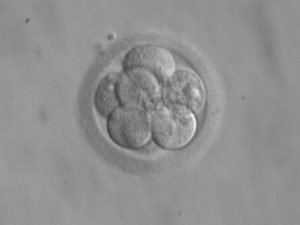
 LONDON, England, October 16, 2017 (
LONDON, England, October 16, 2017 ( EDITOR’S NOTE: This article addresses a specific question regarding whether Catholic hospitals should administer Plan B in rape cases based on the scientific evidence regarding how the drug works. The discussion does not in any way imply that contraceptives are or can be morally licit. The Catholic Church teaches that “every action which, whether in anticipation of the conjugal act, or in its accomplishment, or in the development of its natural consequences, proposes, whether as an end or as a means, to render procreation impossible” is intrinsically evil (CCC 2370 quoting Humanae Vitae 14).
EDITOR’S NOTE: This article addresses a specific question regarding whether Catholic hospitals should administer Plan B in rape cases based on the scientific evidence regarding how the drug works. The discussion does not in any way imply that contraceptives are or can be morally licit. The Catholic Church teaches that “every action which, whether in anticipation of the conjugal act, or in its accomplishment, or in the development of its natural consequences, proposes, whether as an end or as a means, to render procreation impossible” is intrinsically evil (CCC 2370 quoting Humanae Vitae 14).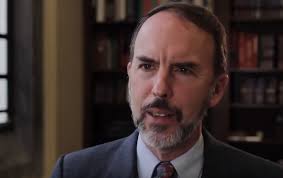 Editor’s note: The following address was given in a catechesis to youth at World Youth Day.
Editor’s note: The following address was given in a catechesis to youth at World Youth Day.




 Back in November, the Wall Street Journal featured a prominent
Back in November, the Wall Street Journal featured a prominent 




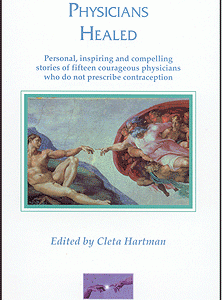
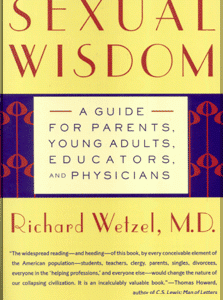
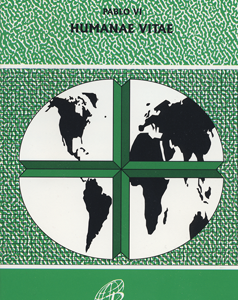

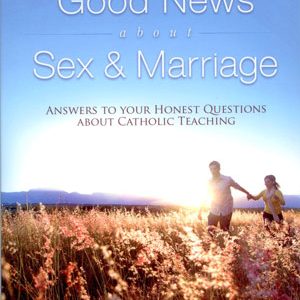

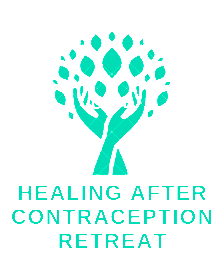
A 40th birthday for IVF
Philippa Taylor
40 years after her birth it is estimated that more than seven million babies have been born as a result of IVF and other assisted reproduction treatments. Around 2.4 million assisted reproductive technologies (ART) cycles are estimated to take place each year world-wide, with about 500,000 babies born as a result. If rates stay at current levels, then a million people alive at the end of the century will owe their lives to assisted reproductive technologies (1.4 percent of the global population).
40 years ago it was generally assumed that IVF would remain rare. However there has since been an explosion of assisted fertility services: intracytoplasmic sperm injection (ICSI), gamete and embryo freezing, gamete and embryo donation, embryo genetic diagnosis and surrogacy, to name some. The most common fertility treatment now is ICSI, accounting for around two-thirds of all treatments worldwide, with conventional IVF around one-third (proportions that vary across countries).
Infertility is deeply distressing and can affect every area of life for those struggling to conceive – as many as one in six couples. The Bible views childlessness as a painful, personal tragedy (Samuel’s mother Hannah’s anguished prayer illustrates the stress of infertility, as does Rachel in Genesis 30) while the Psalmist praises the God who ‘gives the barren woman a home, making her the joyous mother of children’ (Psalm 113:9).
IVF can provide couples with a child they desperately want. And it has brought many precious new lives into being, and real happiness to millions of parents.
Therefore, many now think IVF is the answer to infertility.
But it is not. While the IVF industry and media focus on and market the success stories, the average delivery rate from ART treatments are around just 19 percent per cycle – a global IVF cycle failure rate of around 80 percent. In the UK, the Human Fertilisation and Embryology Authority reports a ‘success’ rate of 26.5 percent . This ‘success’ rate actually means that 73.5 percent of cycles do not lead to a birth.
Success rates for IVF diminish rapidly after 35 years of age for women, largely because of loss of ovarian follicle reserve and oocyte quality with age. Even a woman under 35 years has less than a one in three chance of having a baby per embryo transferred, using her own eggs and partner’s sperm. A woman in her early 40s only has about a one in ten chance of having a baby per embryo transferred. And the success rate drops to a mere two percent for women over 44. This is highly relevant in a time when more and more women are delaying childbirth to concentrate on jobs and careers. When celebrities in their 50s become pregnant, what the media do not tell you is that it is almost always with a donor egg (indeed, 59 percent of women over 44 years used donor eggs in their treatment).
IVF heartbreak is real. IVF is no guarantee of success, despite all too often being touted as such. Added to this is the significant financial, emotional and physical toll that IVF can have on women.
Yet still, with one in six couples experiencing problems conceiving, the fertility industry is thriving. It is estimated to be worth over £600 million in the UK alone, with one cycle of IVF costing up to £5,000 or more.
There are some very troubling aspects of the fertility industry.
For instance, the number of babies born with health challenges (see here and here too), the use of medically unproven techniques and ‘add-ons’, poor regulation, the shocking commercialisation and exploitation of women’s wombs and eggs (see here too) and the change to ‘traditional’ notions of family structure and biological parenthood, through gamete donation (which can bring much heartache to the offspring) and surrogacy. A dead or dying person can have their reproductive tissue removed to enable someone else to have a child – even a grandmother.
IVF has also opened what many regard as a Pandora ’s Box of genetic engineering, cloning, pre-implantation genetic diagnosis (screening out of embryos), embryonic stem cell harvesting, research on three parent babies and animal-human hybrids. Many IVF programmes involve the production of spare embryos, which are then used for research, disposed of, or frozen for future use. Between 1990 and 2013 over two million were allowed to perish, according to a Parliamentary answer. Now, over 170,000 IVF embryos perish every year. Embryos are experimented on, donated to other couples, frozen indefinitely … or even turned into jewellery.
The last 40 years of IVF and ART have given many couples happiness but even more couples, dashed hopes. The next 40 years will undoubtedly bring even more possibilities for the fertility industry, but what is possible is not always right.
A moral vision, especially one shaped by a Christian understanding of the person and family, has to be prepared to say ‘no’ to some exercises of human freedom and to turn away from technology that is possible but unwise. With fertility treatments, while we can and should use our God-given skills to help alleviate infertility we should also be prepared to acknowledge that there may be suffering we are free to end, but ought not to, that there are children who might be produced through artificial means, but maybe ought not to be.
Philippa Taylor is Head of Public Policy at the Christian Medical Fellowship in the UK. She has an MA in Bioethics from St Mary’s University College and a background in policy work on bioethics and family issues. This article has been abridged from the original post on the CMF blog. To read the original article, click here.
Posted in Embryonic Stem Cells, IVF, News & Commentary, Pro-life issues | No Comments »